Penne pasta is a tube-shaped dried pasta that originated in Italy. It's a favorite among pasta lovers due to its versatility in a range of recipes. The term "penne" means "quills" or "pens" in Italian, reflecting its pointed, pen-like shape.
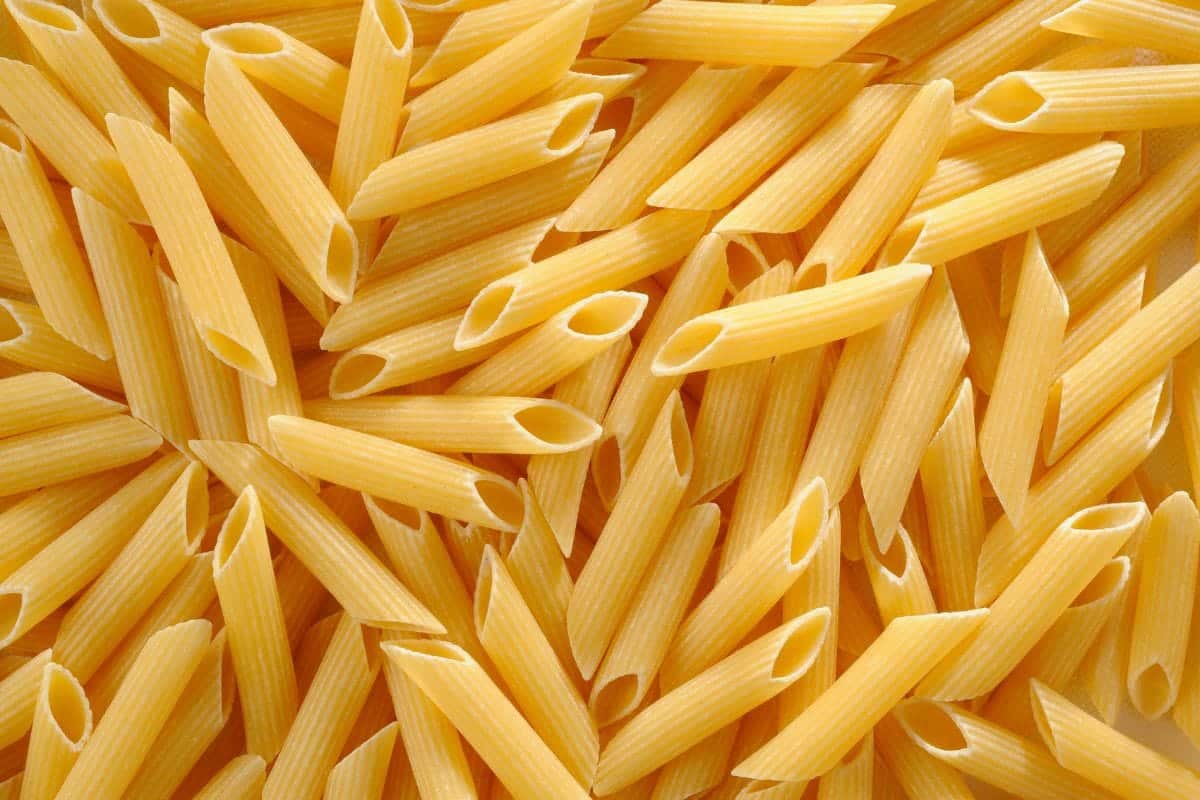
History and Origin
So, where does penne pasta come from? It all started in Liguria, Italy, in the 19th century. A person named Giovanni Battista Capurro, came up with an idea. On March 11, 1865, he patented a machine that could cut pasta diagonally without breaking it.
Before Giovanni's invention, penne was cut by hand using scissors, which didn't always look so neat – the edges were often jagged and uneven. But, this new machine made the pasta look more consistent and neat, and that's how we got penne.
Here's an interesting fact: the very first penne pasta wasn't the same color we're used to. They used saffron to color it, a technique common in medieval times, giving the pasta a golden color. So, while most penne today is just the natural color of wheat, the original version had a rich golden-yellow color to it!

What does "penne" mean?
"Penne" is an Italian word that translates to "pen" in English. This pasta's name refers to its shape resembling a quill pen. The ends of penne pasta are typically cut diagonally, giving them an appearance similar to the slanted tip of a quill, which is an old-style writing instrument that was dipped in ink.
Production Process
Making penne begins with durum wheat semolina and water. These ingredients are combined to create a firm dough, which is then pushed through a die in an extrusion process to form the iconic tube shape. After forming, each piece is cut at an angle, echoing the tip of a quill pen.

Types of Penne
Penne pasta comes in two types: 'rigate', which means grooved, and 'lisce', meaning smooth.
Penne rigate, the most common type, boasts ridges or lines along its length. This textured exterior makes it perfect for clinging onto robust, chunky sauces, enhancing each bite with more flavor.
On the other hand, penne lisce presents a smoother exterior, often used in dishes with more delicate or liquid-based sauces. Some pasta makers use the name 'mostaccioli' for smooth penne.
There are also different sizes. Mezze penne which are half the size of normal penne and pennoni which are larger.
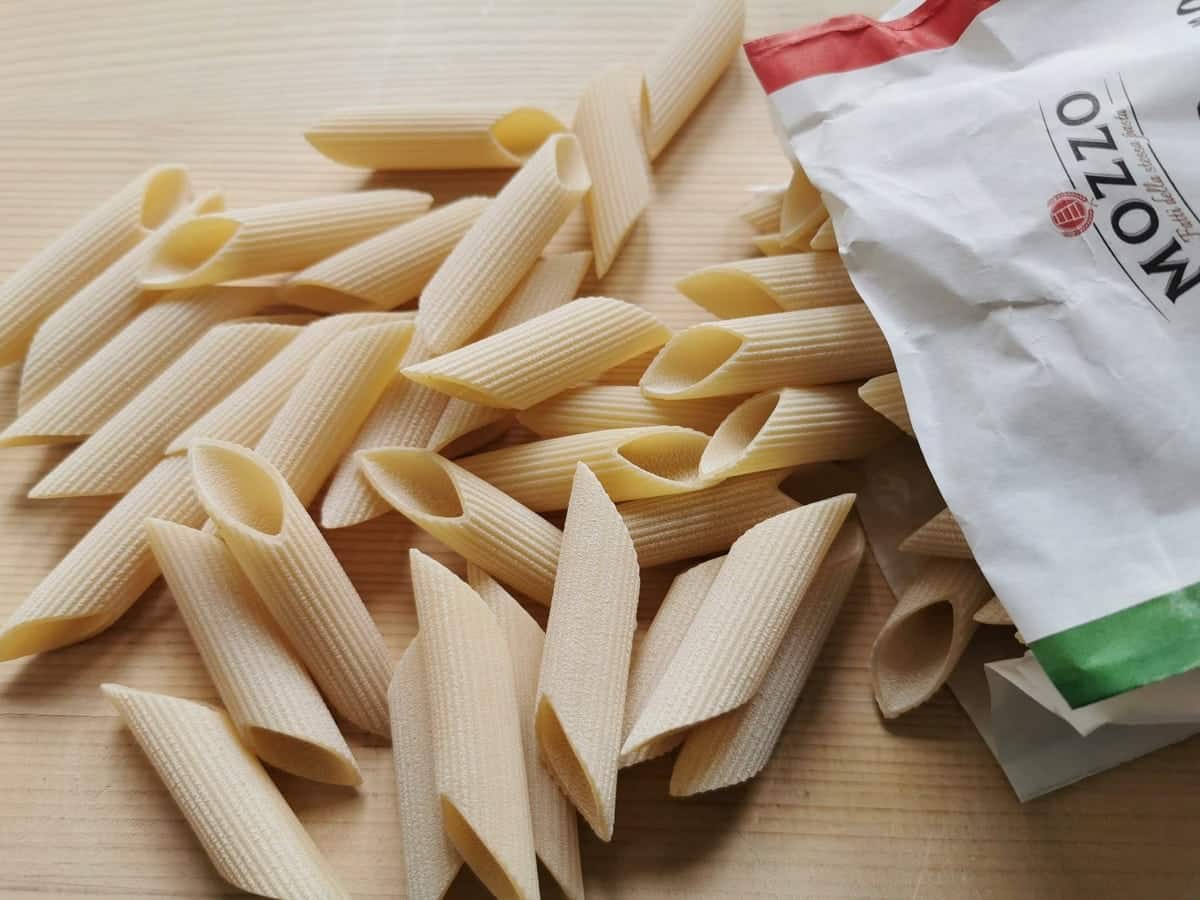
Popular Penne Pasta Recipes
Penne recipes are often with heavier meat or tomato based sauces and not so frequently with seafood or light creamy sauces. It is also a very popular choice for baked pasta dishes and pasta salads.
Some of the most well-known dishes include Penne alla Vodka, a creamy, slightly spicy tomato sauce laced with vodka, and Arrabbiata, which has an "angry" spicy tomato sauce.
The word ‘arrabbiata’ means angry in English and refers to the fact that the sauce can make your face turn red, similar to when you are angry!
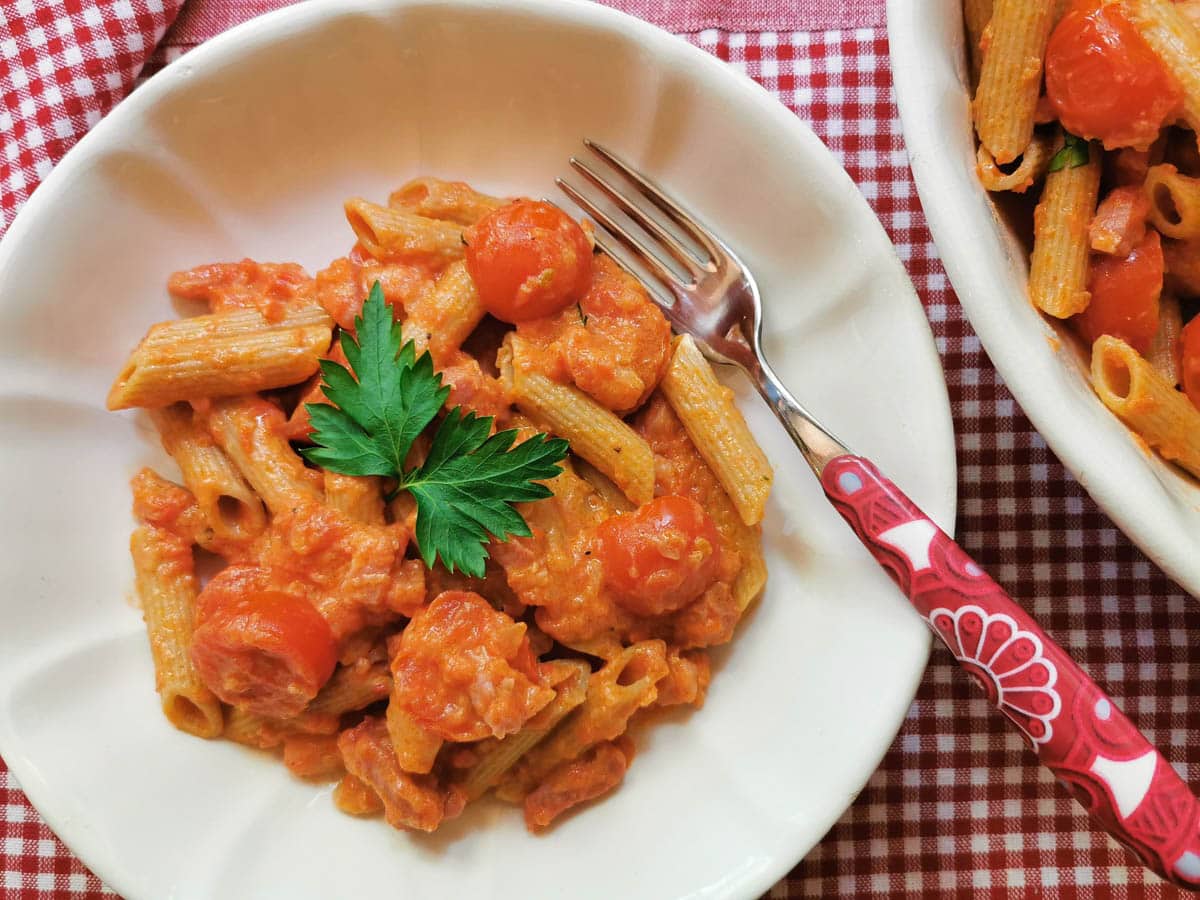
How to Cook Penne Pasta?
Cooking penne is like cooking any pasta. The main difference is in the amount of cooking time. Here are some tips on how to cook the perfect penne pasta:
- Boil Water: Fill a large pot with water and bring it to a rolling boil. Add salt to the water then allow the pot to boil again. Italians calculate 100g of pasta per person cooked in 1 liter of water with 10g of sea salt. A general guideline is to use about 2 tablespoons of salt for every 4 liters (1 gallon) of water.
- Add Penne: Carefully pour the penne pasta into the boiling water. Stir the pasta occasionally to prevent sticking and use the package instructions as a guideline for its cooking time which is usually around 8-12 minutes.
- Check for Doneness: To ensure that the penne is cooked to your desired level of tenderness, taste a piece of pasta a couple of minutes before the suggested cooking time ends. Look for a slightly firm texture, known as "al dente," which means the pasta is cooked but still has a slight bite.
- Drain the Pasta: Once the penne is cooked to your liking, carefully pour the contents of the pot into a colander or a pasta strainer and allow the water to drain.
- Serve the Pasta: Now that the penne pasta is cooked, you can follow the next steps, in whichever recipe you are making. This may include mixing the pasta into a pan with a sauce, placing it in a mixing bowl for a cold pasta salad or onto a plate.
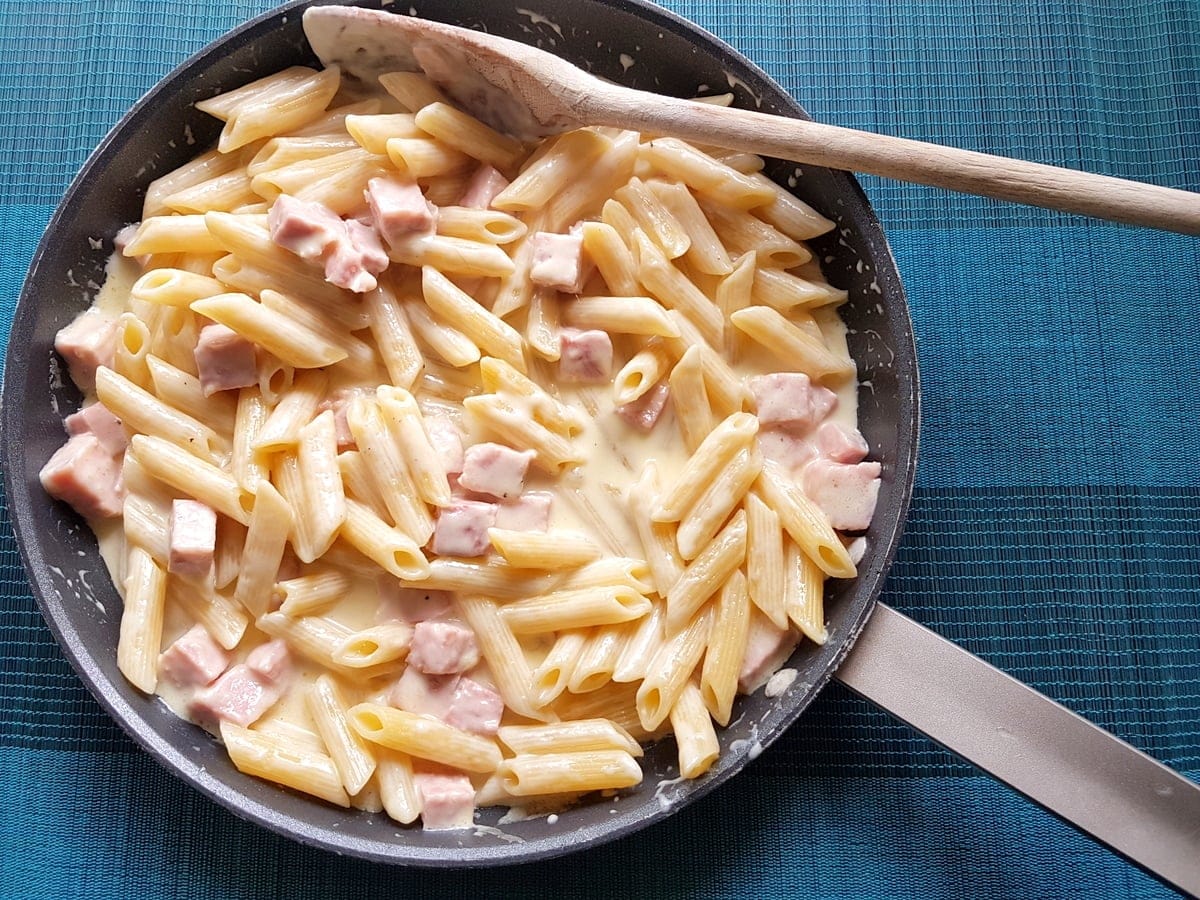
How to Storage Penne Pasta?
When it comes to storing penne pasta, here are some tips to ensure its freshness and quality:
Storing Uncooked Penne Pasta (Opened):
- After opening the package of uncooked penne pasta, ensure the remaining pasta is free from any moisture or contaminants.
- If the original packaging is resealable, seal it tightly to prevent air and moisture from entering. If not, transfer the pasta to an airtight container or a resealable plastic bag.
- Store the pasta in a cool, dry place such as a pantry or cupboard.
- Then make sure to use the remaining pasta within its expiration date.
Storing Cooked Penne Pasta:
- Allow the cooked penne pasta to cool down to room temperature before storing.
- Place the pasta in an airtight container or a zip-top bag. If using a container, ensure it is tightly sealed.
- To prevent the pasta from sticking together, you can mix in a small amount of olive oil before sealing the container.
- Refrigerate the cooked penne pasta and consume it within 3 to 5 days.
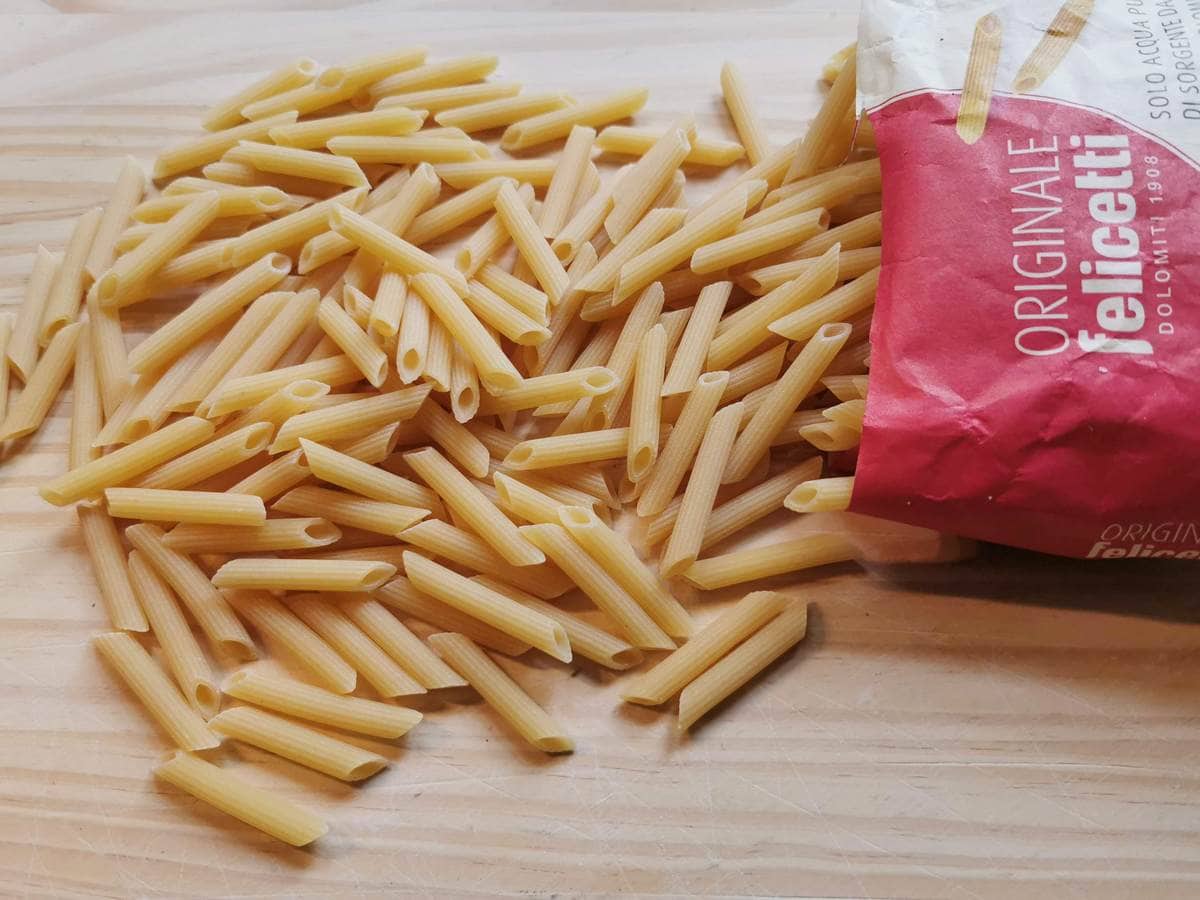
Nutritional Notes
Penne pasta is known for being energy-dense, primarily due to its carbohydrate content. While it provides a good source of energy, traditional penne pasta made from refined wheat flour tends to be low in fiber.
If you're looking for a more nutritionist-dense penne, you can use wholegrain penne pasta, which is higher in fiber and has a lower glycemic index.
There are also other alternatives that cater to dietary restrictions like gluten-free, which are often made with corn and rice flour.
Penne Pasta Recipes You May Like:
- Pasta alla Valdostana
- Pasta alla Pizzaiola
- Creamy Ham and Tomato Penne al Baffo
- Italian Creamy Beef Ragu
- Easy Gorgonzola Pasta with Olives alla Cenere
If you are interested in more about pasta like how to make homemade pasta and different types of gnocchi, check out my shop page for some great video online courses from my friends in Rome! Nothing beats learning to make pasta from Italians! Plus while you’re there why not order a copy of one of my pasta recipe cookbooks or checkout some recommended pasta making tools?
Pin for Later:
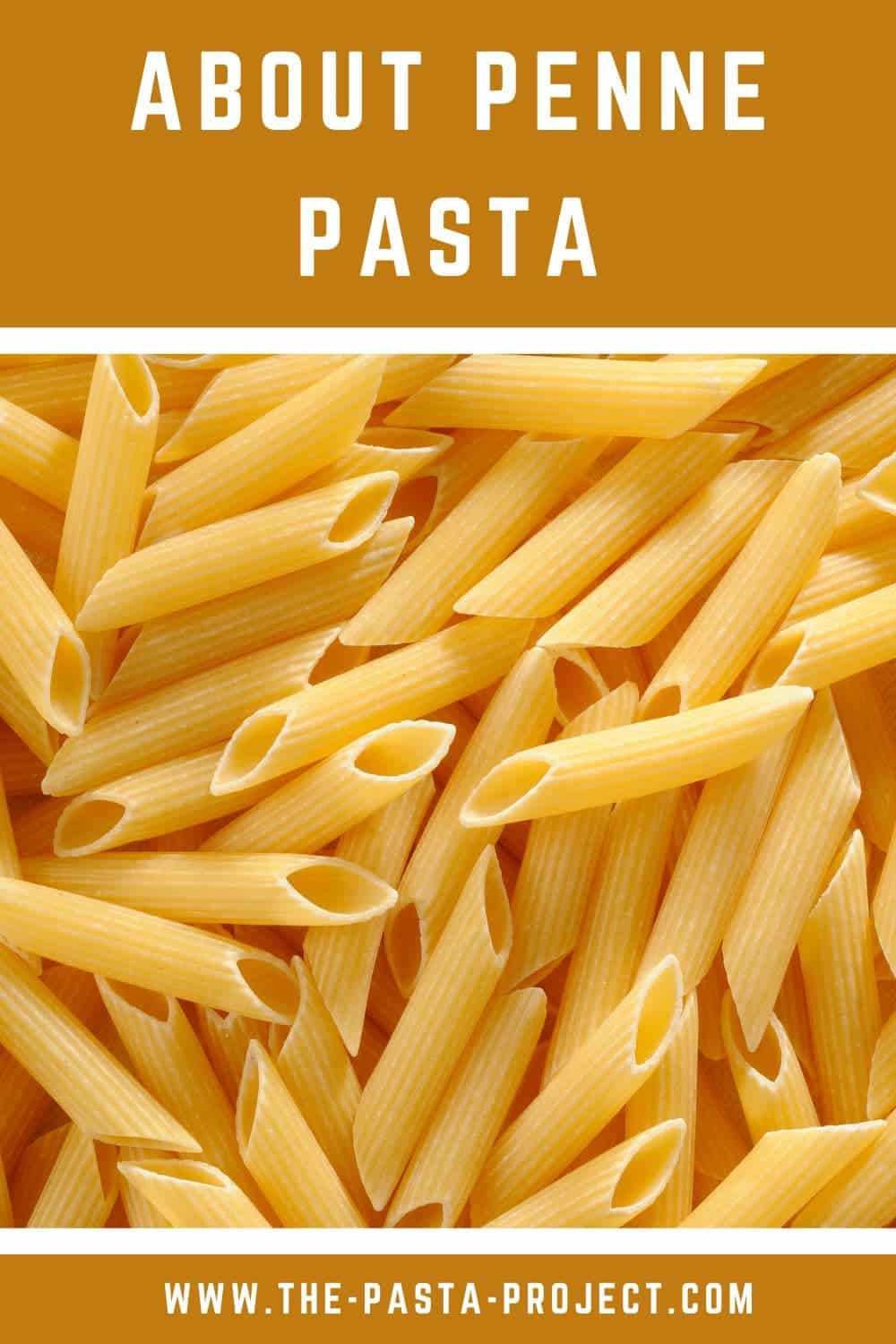
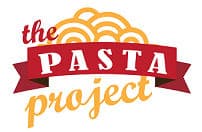





Tell us what you think